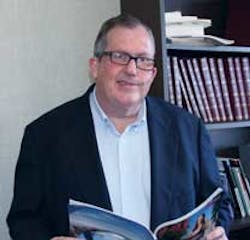Editor's Note
The American Dental Hygienists' Association hosted another fine annual session last month in Phoenix. Actually, I want to turn your attention to next year's meeting in Boston. But, briefly, the ADHA deserves many kudos for the direction of its annual meetings over the last several years. RDH, of course, has no official affliation with the ADHA; we gladly attend the annual session each year to observe the dental hygiene profession in action at ground zero. But, in my mind, the last three annual sessions have been outstanding. The association has gone out of its way to make all attendees feel welcome; it's no longer just a "political" get-together for the delegates who vote on the decisions critical to the profession. If you haven't been in a while, you should see for yourself how much fun the annual meeting is for all members and nonmembers.
Perhaps Boston can fit into your plans. Boston is 67 miles from the Connecticut border. That's close enough. The roots of the profession are in Connecticut, and those roots are 100 years old next year. It will only be the 90th annual session for the association, but Dr. Fones started your profession in Bridgeport in 1913.
The past presidents of the association will take turns as guest editors for the Access journal, pausing to reflect on what changes they have witnessed in the profession during the last 29 years. It should be very interesting reading in the next 12 issues, starting this month. Twenty-nine is the number I'm sticking with, because I'm not the fool to suggest that a past president can recall anything prior to that. All past presidents are 29 years old, and they can only remember 29 years.
I'm a good boy.
Geenna Davis, Debbie Reynolds, and Erin Brockovich will all make appearances at the annual session -- a star-studded celebration all around.
A question I have is: What do we want from the next 100 years? Do I have an opinion? I'm glad you asked.
I would like to see the skills provided by dental hygienists not tied so heavily to revenue models established by general dentists. For-profit dental practices have struggled for decades to justify the business expense of preventive dentistry. For the first 100 years, these models enjoyed a half-full/half-empty success rate. It seems like every time a federal survey is conducted on the nation's oral health, anywhere from a half to a third of the population do not benefit from the skills that dental hygienists provide. I'm not arguing for free health care, and I think the American Dental Association has played a commendable role in turning attention back to preventive dental care -- even though they were kind of forced into the role by the national media. Nevertheless, let's steer away from making doctors figure out the role of dental hygiene in dentistry, at least from the financial standpoint.
My second wish is for more innovation from the manufacturers of home care products. The products that consumers use for oral health presumably would work 100% of the time if compliance was absolute. That's not good enough, is it? I hope innovative manufacturers can feel encouraged by the markets to develop products that help prevent dental disease all the time for all consumers. It may be easier to relieve that pain associated with a toothache in 2013, but the pain is the same one experienced in 1913. That's too long, neighbor.
That's what I wish for during the next 100 years. As was the case in 1913, there are few limits on what we can accomplish. It's tantalizing to think about what they will be writing about dental hygiene in 2113. How about your wish list? Drop me a line at [email protected] to let me know.

